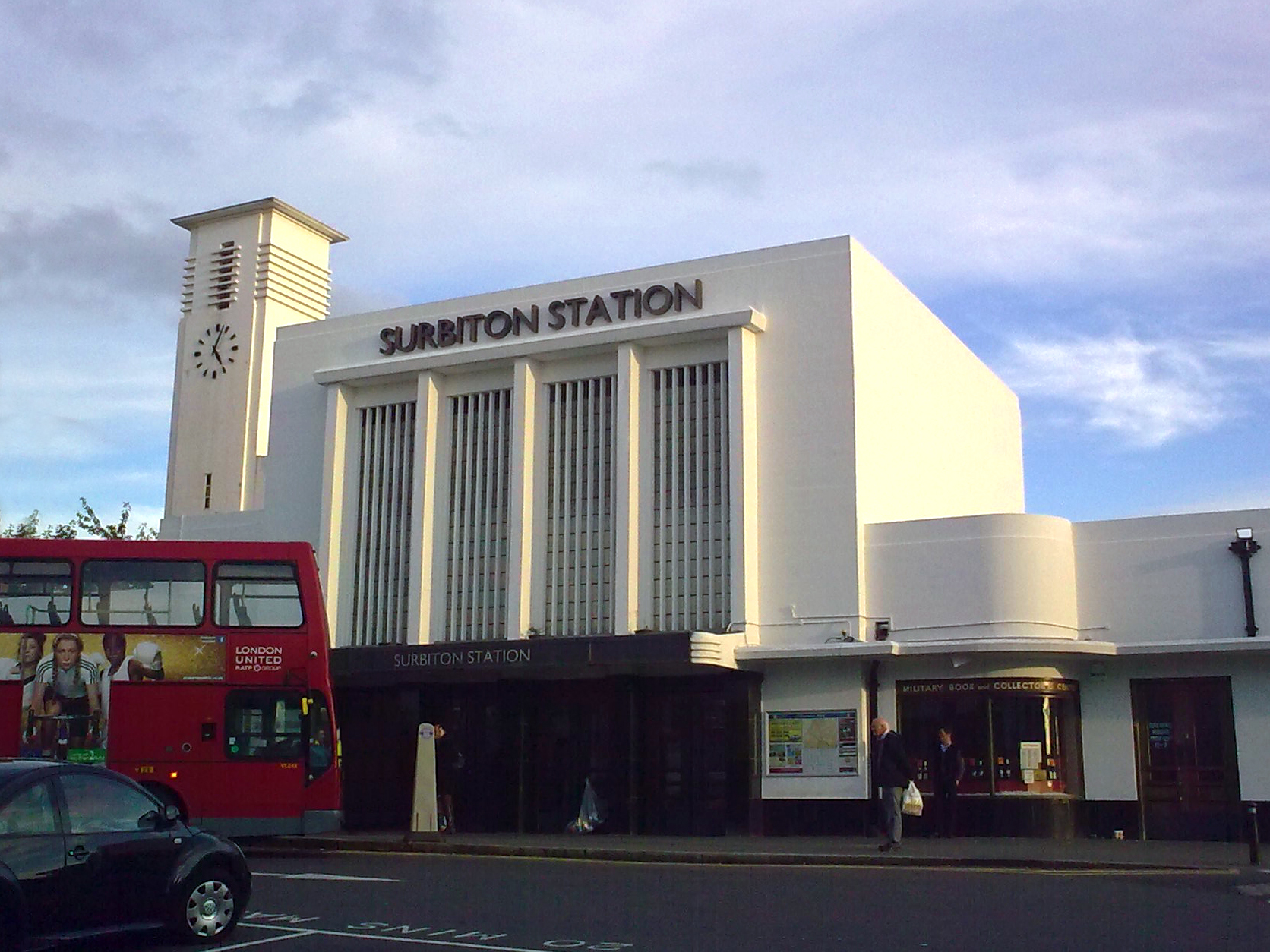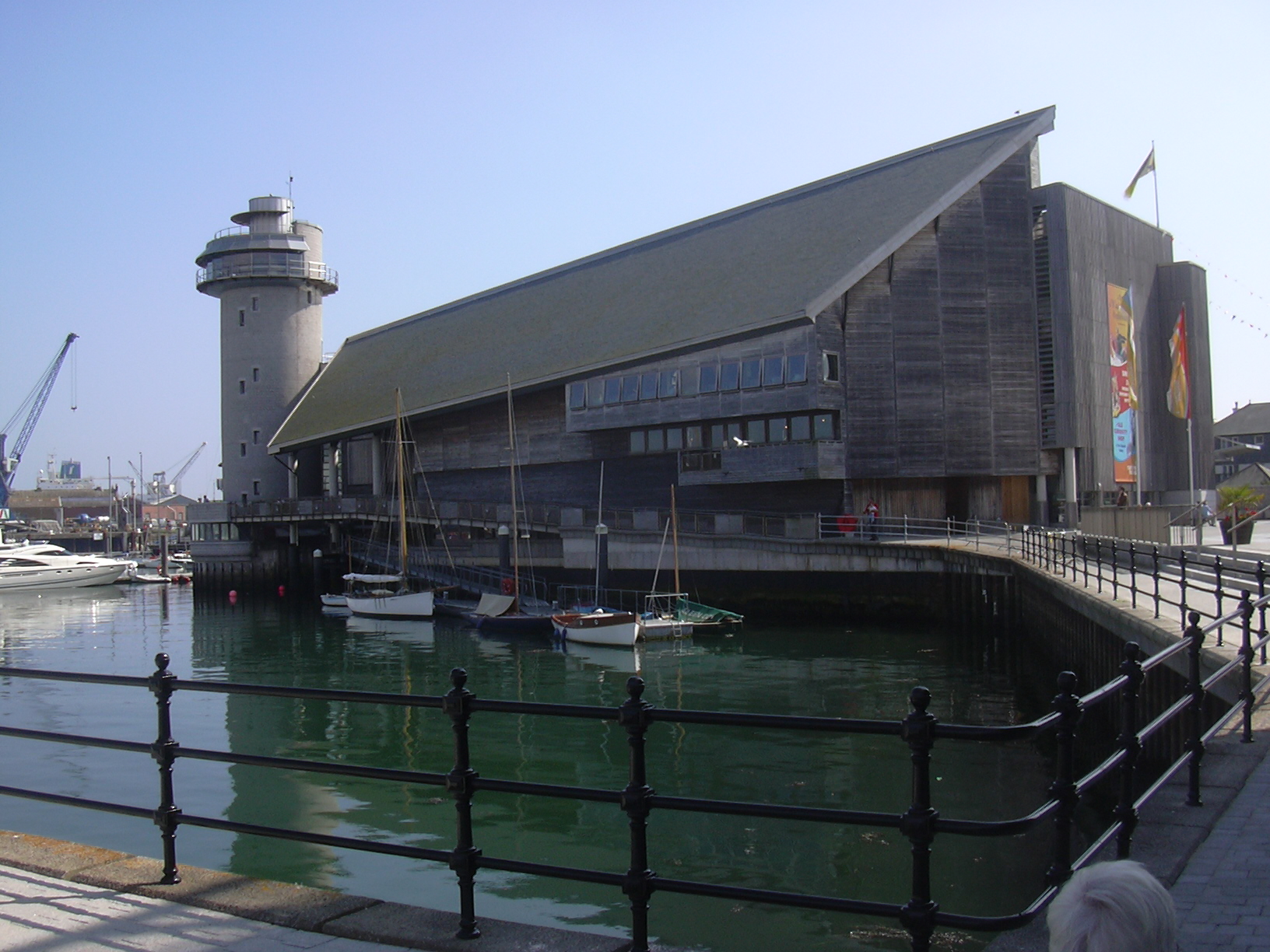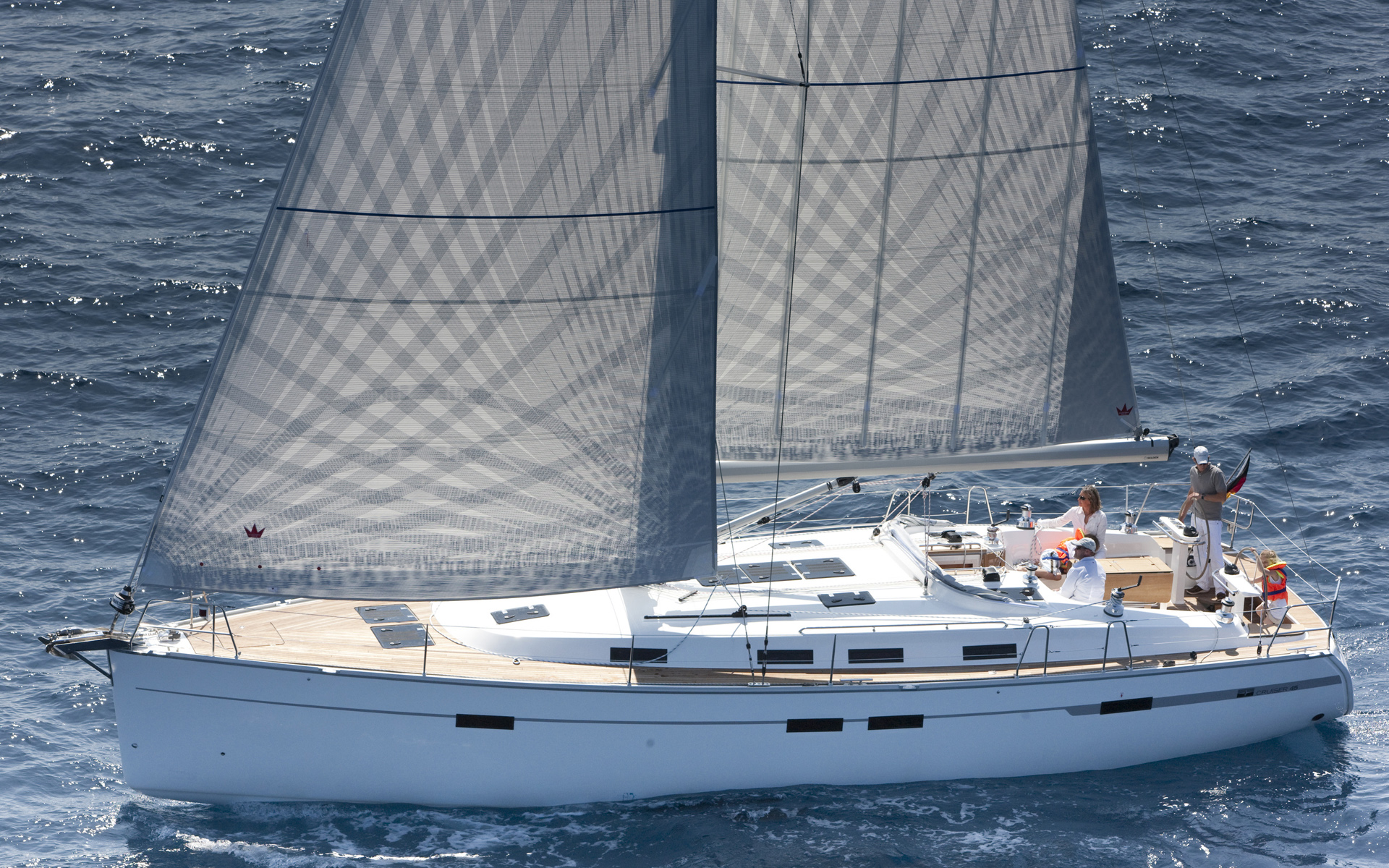|
Thames A Class Rater (scow)
The Thames A Class Rater is both a historic and modern specialist sailing craft designed for the particular conditions at Thames Sailing Club, on the River Thames at Surbiton in England. The class is a development of the Half Rater, which was designed by Linton Hope and Alfred Burgoyne in 1907. The rules refer to the craft as a yacht. The rig is lofty, supported by standing rigging and usually by runners, and the hull is a scow with metal centreplate. All boats built before 1922 are made from wood whilst those built since are of a different construction. The rater is extremely fast, planes easily, and is a technically highly challenging boat to sail in anything above moderate wind conditions. It is usually sailed with a crew of three. Raters have traditionally commuted by river under tow between Thames Sailing Club at Surbiton and Upper Thames Sailing Club at Bourne End, Buckinghamshire. Where raters sail * Thames Sailing Club * Upper Thames Sailing Club * Yangon Sailin ... [...More Info...] [...Related Items...] OR: [Wikipedia] [Google] [Baidu] |
River Thames
The River Thames ( ), known alternatively in parts as the The Isis, River Isis, is a river that flows through southern England including London. At , it is the longest river entirely in England and the Longest rivers of the United Kingdom, second-longest in the United Kingdom, after the River Severn. The river rises at Thames Head in Gloucestershire and flows into the North Sea near Tilbury, Essex and Gravesend, Kent, via the Thames Estuary. From the west, it flows through Oxford (where it is sometimes called the Isis), Reading, Berkshire, Reading, Henley-on-Thames and Windsor, Berkshire, Windsor. The Thames also drains the whole of Greater London. The lower Reach (geography), reaches of the river are called the Tideway, derived from its long Tidal river, tidal reach up to Teddington Lock. Its tidal section includes most of its London stretch and has a rise and fall of . From Oxford to the estuary, the Thames drops by . Running through some of the drier parts of mainland Bri ... [...More Info...] [...Related Items...] OR: [Wikipedia] [Google] [Baidu] |
Surbiton
Surbiton is a suburban neighbourhood in South West London, within the Royal Borough of Kingston upon Thames (RBK). It is next to the River Thames, southwest of Charing Cross. Surbiton was in the Historic counties of England, historic county of Surrey and since 1965 it has been in Greater London. Surbiton comprises five of the RBK's wards: Alexandra, Berrylands, St. Mark's, Surbiton Hill, and Tolworth. Founded originally as Kingston-upon-Railway when the area was first developed in the 1840s, Surbiton possesses a mixture of grand 19th-century townhouses, Art Deco Quadrangle (architecture), courts, and more recent residential blocks blending in with semi-detached 20th-century housing estates. With a population of 45,132 in 2016, it accounts for approximately 25% of the total population of the Royal Borough of Kingston upon Thames. Surbiton extends over an area of . Etymology Though Surbiton only received its current name in 1869, the name is attested as ''Suberton'' in 1179, ''S ... [...More Info...] [...Related Items...] OR: [Wikipedia] [Google] [Baidu] |
Linton Hope
Linton Chorley Hope Royal Aeronautical Society, FRAes (18 April 1863 – 20 December 1920) was a sailing (sport), sailor from Great Britain, who represented his country at the Sailing at the 1900 Summer Olympics – .5 to 1 ton, 1900 Summer Olympics in Meulan, France. With Lorne Currie as helmsman and fellow crewmembers John Gretton and Algernon Maudslay, Hope took first places in both the race of the Ton class, .5 to 1 ton class and the Sailing at the 1900 Summer Olympics – Open class, Open class. Personal life Hope was born in Macclesfield, Cheshire on 18 April 1863 as Linton Chorley Hopps the son of Edwin and Sara Hopps. He later changed his surname to Hope. Hope married Mabel Ellington in 1898 and they had a son and a daughter, their son Eustace Jack Linton Hope was killed in action in 1941 as a group captain in the Royal Air Force. Hope died on 20 December 1920 in the Midhurst district of Sussex. Professional life Hope designed a variety of yachts, as well as the Fairy O ... [...More Info...] [...Related Items...] OR: [Wikipedia] [Google] [Baidu] |
National Maritime Museum Cornwall
The National Maritime Museum, Cornwall (NMMC) is located in a harbourside building at Falmouth in Cornwall, England. The building was designed by architect M. J. Long, following an architectural design competition managed by RIBA Competitions. It is an independent charitable trust and, unlike other national museums, receives no direct government support. Its mission is to promote an understanding of boats and their place in people's lives, and of the maritime heritage of Cornwall. It does this by presenting the story of the sea, boats and the maritime history of Cornwall. It maintains the National Small Boats Register (NSBR). History The museum grew out of the FIMI (Falmouth International Maritime Initiative) partnership which was created in 1992 and was the result of collaboration between the National Maritime Museum, Greenwich, and the former Cornwall Maritime Museum in Falmouth. The trustees of the earlier museum, Tony Pawlyn (1942-2024), George Hogg and others secured fu ... [...More Info...] [...Related Items...] OR: [Wikipedia] [Google] [Baidu] |
Yacht
A yacht () is a sail- or marine propulsion, motor-propelled watercraft made for pleasure, cruising, or racing. There is no standard definition, though the term generally applies to vessels with a cabin intended for overnight use. To be termed a , as opposed to a , such a pleasure vessel is likely to be at least in length and may have been judged to have good aesthetic qualities. The Commercial Yacht Code classifies yachts and over as . Such yachts typically require a hired crew and have higher construction standards. Further classifications for large yachts are : carrying no more than 12 passengers; : solely for the pleasure of the owner and guests, or by Flag#At sea, flag, the country under which it is registered. A superyacht (sometimes ) generally refers to any yacht (sail or power) longer than . Racing yachts are designed to emphasize performance over comfort. Charter yachts are run as a business for profit. As of 2020, there were more than 15,000 yachts of sufficient size ... [...More Info...] [...Related Items...] OR: [Wikipedia] [Google] [Baidu] |
Running Backstay
A running backstay is a rigging component on a sailboat which helps support the mast. A running backstay runs from each lateral corner of the stern to the mast at the level where the forestay begins in the fractional rig. Because they are attached low on the mast, they can present a significant problem in an accidental gybe, as the boom hits the stay, with the possibility of breaking the boom, mast, or both. During beating or reaching, the running backstay in windward side is in tension. The one in the leeward side is lazy. As the boat tacks they change over. Another function of the running backstay is to adjust the tension of the forestay to suit the sailing angle and sea condition. In general, during a hard beat when the boat sails very close to the wind, the running backstay is tightened to increase the tension of the forestay. The genoa is sheeted in. Under these conditions, the draft Draft, the draft, or draught may refer to: Watercraft dimensions * Draft (hull), th ... [...More Info...] [...Related Items...] OR: [Wikipedia] [Google] [Baidu] |
Highfield Lever
A Highfield lever is a lever device which allows tension to be rapidly set up in a wire and equally rapidly released to the required extent. It is frequently used in sailing boats where tension in some part of the rigging needs to be adjusted to a pre-set amount as the wind impinges on one side of the sails or the other. It is typically used in running backstay A running backstay is a rigging component on a sailboat which helps support the mast. A running backstay runs from each lateral corner of the stern to the mast at the level where the forestay begins in the fractional rig. Because they are attached ...s (runners). To make it work in this application, the backstay is led through a block or fairlead along the deck to a two-legged, second order lever mounted with its fulcrum above deck level. The end of the runner is attached to a cross-member between the two legs and part way along the lever. When the lever is moved away from the fairlead, tension is placed on the runner on ... [...More Info...] [...Related Items...] OR: [Wikipedia] [Google] [Baidu] |
Scow
A scow is a smaller type of barge. Some scows are rigged as sailboat, sailing scows. In the 19th and early 20th centuries, scows carried cargo in coastal waters and inland waterways, having an advantage for navigating shallow water or small harbours. Scows were in common use in the American Great Lakes and other parts of the U.S., Canada, southern England, and New Zealand. In modern times their main purpose is for recreation and racing; there are also garbage scows for aquatic transport of refuse. Scows The name "scow" derives from the Dutch . Old Saxon has a similar word which means to push from the shore, clearly related to punting. The basic scow was developed as a flat-bottomed barge ( a large Punt (boat), punt) capable of navigating shallow rivers and sitting comfortably on the bottom when the tide was out. By 1848 scows were being rigged for sailing using leeboards or sliding keels. They were also used as dumb barges towed by steamers. Dumb scows were used for a variety ... [...More Info...] [...Related Items...] OR: [Wikipedia] [Google] [Baidu] |
Centreboard
A centreboard or centerboard (US) is a retractable hull appendage which pivots out of a slot in the hull of a sailboat, known as a ''centreboard trunk'' (UK) or ''centerboard case'' (US). The retractability allows the centreboard to be raised to operate in shallow waters, to move the centre of lateral resistance (offsetting changes to the sailplan that move the centre of effort aft), to reduce drag when the full area of the centreboard is not needed, or when removing the boat from the water, as when trailering. A centreboard which consists of solely a pivoting metal plate is called a centerplate; the term "centreboard" may refer to either a wooden or a metal pivoting retractable foil. A daggerboard is similar but slides vertically rather than pivoting. The analog in a scow is a bilgeboard: these are fitted in pairs and used one at a time. General History Lt. John Schank (c. 1740 – 6 February 1823) was an officer of the British Royal Navy and is credited with the inventio ... [...More Info...] [...Related Items...] OR: [Wikipedia] [Google] [Baidu] |
Bourne End, Buckinghamshire
Bourne End is a village mostly in the parish of Wooburn, but partly in that of Little Marlow in Buckinghamshire, England. It is about five miles (8 km) south-east of High Wycombe and three miles (5 km) east of Marlow, near the boundary with Berkshire and close to where the Buckinghamshire River Wye empties into the Thames. History Bourne End's original location differed from today's established village centre, and was a half-mile downstream on the River Thames. The name refers to the end of the river (''bourne'' being an obsolete term for river), and derived from the mouth of the River Wye. Then a hamlet, it appears on Morden's 1722 map of Buckinghamshire as "Born end". It was noted in the 19th century, however, that the name had been corrupted to "Bone End", apparently through local mispronunciation and thence on official maps and documents. In 1858, the vicar of Wooburn succeeded in reversing the change, and the corrected name remains in use today. The length ... [...More Info...] [...Related Items...] OR: [Wikipedia] [Google] [Baidu] |
Teddington Lock
Teddington Lock is a complex of three locks and a weir on the River Thames between Ham and Teddington in the London Borough of Richmond upon Thames, England. Historically in Middlesex, it was first built in 1810. The limit of legal powers between the Port of London Authority, the navigation authority downstream to the North Sea and that upstream to small headwaters of the river, the Environment Agency, is marked nearby by an obelisk on the "Surrey" (towpath, right) bank. The weir named Teddington Weir marks the river's usual tidal limit and is the lowest on the Thames. This lock is the lowest full-tide lock and second lowest of all-tide locks on the Thames. The complex of civil engineering or infrastructure in essence consists of a large long weir and three locks: a conventional launch lock in regular use, very large barge lock and a small skiff lock. The barge lock was made to accommodate long barges, steamers or passenger ferries and has an additional set of gates ... [...More Info...] [...Related Items...] OR: [Wikipedia] [Google] [Baidu] |





